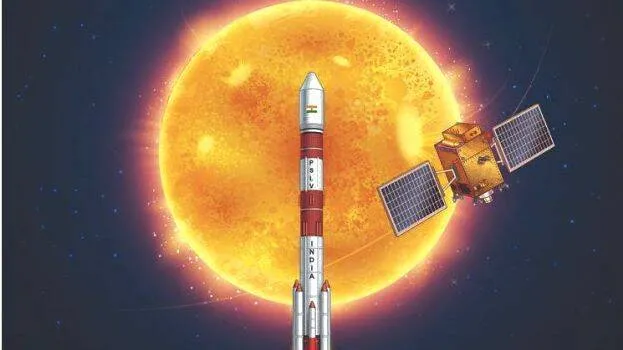

THIRUVANANTHAPURAM: India's solar observation probe Aditya L1 was successfully injected into the final orbit on Saturday before heading straight to its final mission. The great news was shared by PM Modi on his X page.
“India creates yet another landmark. India’s first solar observatory Aditya-L1 reaches its destination. It is a testament to the relentless dedication of our scientists in realising among the most complex and intricate space missions.” PM Modi wrote on X.
Lagrange point is the point between the Earth and the Sun, 15 lakh kilometres from the Earth, without falling into the gravitational pull of the Sun and the Earth. NASA from the United States and the European Space Agency from France supported the critical mission. Within hours, Aditya's message from the halo orbit reached the telemetry centre in Bengaluru. Following this, ISRO Chairman Somnath announced that the calculations were correct.
The critical orbit change was carried out at 4 pm on Saturday. ISRO with the cooperation from experts around the world made the final maneuvers from the telemetry center in Bangalore. After the success of Chandrayaan 3, ISRO successfully launched India's first solar space observatory mission, Aditya L1, on September 2. The spacecraft was launched towards Lagrange Point, a unique region where gravitational forces between the Earth and the Sun reach equilibrium. The destination has been reached after a long journey of 125 days.
The main objectives are the study of the temperature variation of the outer part of the Sun and extreme heat in this region. ISRO hope that the mission will be able to unravel the complex functions of the Sun and provide important information about the Solar System. The world looks forward to Aditya for information on weather changes that threaten space satellites, solar winds that affect communications, changes caused by the sun on Earth, and changes in the sun. Soon, all seven devices in Aditya will be fully operational.
Challenges
1 It should maintain its position in the three-dimensional halo 2 lakh km wide, 7 lakh km long and 1 lakh km high
2. It should not fall under the gravitational pull of the sun.
3. The European Space Agency's failed SOHO probe is orbiting Lagrange out of control. A collision must be avoided
India is fourth in front of Sun
India has become the fourth country to achieve success in solar mission. Other countries are Japan, America and Europe. In 1981, Japan was the first to send a probe to the sun. Sun is 15 crore km away from Earth. The closest approach was in December 2021 by NASA's Parker Solar Probe. It came as close as 78 lakh km and flew through the Sun's corona. The Lagrange point reached by Aditya is 14.85 crore km from the Sun. NASA's 'Wind ACE' probe is also present there. India is the second country to successfully reach the Lagrange Point.
Aditya L.1